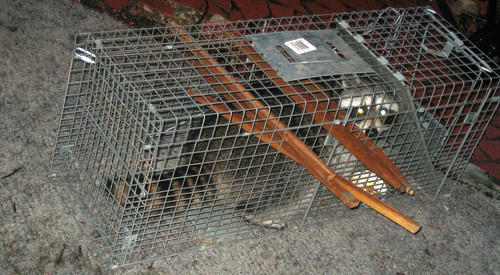Raccoons are curious, intelligent mammals known for their dexterity and problem-solving prowess. However, these characteristics, fascinating as they might be, can pose a significant problem for homeowners. Notoriously mischievous, raccoons are capable of causing considerable damage to homes, yards, and outdoor structures. Their trademarked “raccoon hands” can open doors, untwist lids, and unravel many barriers placed in their way. With the right tools and tips, however, you can repair the damage caused by these rustic interlopers and fortify your home against future raccoon invasions.
First, before going forward with any repairs, it’s essential to ensure that the raccoons are entirely gone from your property and have not left behind any offspring in hidden nests. You can do this by seeking professional help from pest control experts who have the necessary expertise and equipment to thoroughly remove raccoons from your property. Once you are certain that your home is raccoon-free, you can proceed to assess and repair the damage caused by these unsettling guests. Depending on the extent of the destruction, this might include repairing torn ducts, replacing destroyed insulation, fixing scratched and chewed boards, and cleaning up and sealing raccoon latrines.
When raccoons gain access to your attic, it’s usually because they have found it to be a warm, safe location for nesting and raising their young. Raccoons typically access attics by exploiting weak spots in the structure, such as loose roof shingles, holes, and uncapped chimneys. To fix these, replace damaged shingles, caulk small holes, and install chimney caps. A professional contractor or handyman can assist with these tasks as they require a certain level of expertise. Furthermore, raccoons tend to tear apart and compress insulation when nesting. A professional insulation company can help you replace damaged insulation and ensure your attic is well insulated.
Raccoons are also known to damage lawns, gardens, and outdoor structures while searching for food and nesting materials. Raccoons tend to raid garbage bins, compost piles, and garden beds. To repair these areas after a raccoon visit, refortify your compost pile, collect and replant any uprooted plants and straighten any knocked-over structures. For garbage bins, consider getting a metal one with a tight-fitting lid to discourage future raids. For outdoor structures such as decks and sheds, replace broken or chewed wood and reinforce weak points to prevent future break-ins.
Lastly, raccoons often set up latrines on flat surfaces such as attics, rooftops, decks, and lofts. Apart from causing structural damage, raccoon feces can transmit dangerous parasites to humans and pets. Therefore, cleaning up and decontaminating raccoon latrines should be a top priority when repairing raccoon damage. This process involves wearing protective gear, soaking the droppings in bleach, bagging them and disposing of them as hazardous waste; then, the area must be thoroughly sanitized. Given the health risks involved, it is advisable to hire professionals for this job.
In summary, repairing raccoon damage involves a multipronged approach that includes assessing the damage, employing proper repair strategies, and fortifying your home against future invasions. Remember, prevention is often the best strategy when dealing with raccoon invasions. Secure your home, keep an eye for potential entry points, and always maintain clean environments to avoid attracting raccoons in the first place. Never handle raccoons or attempt to repair raccoon damage without personal protective equipment and proper training since these creatures can transmit diseases to humans.
20110405 – raccoon #6 – $500 of damage, promptly escaped – IMG_2915
By Claire CJS on 2011-04-05 05:43:35
